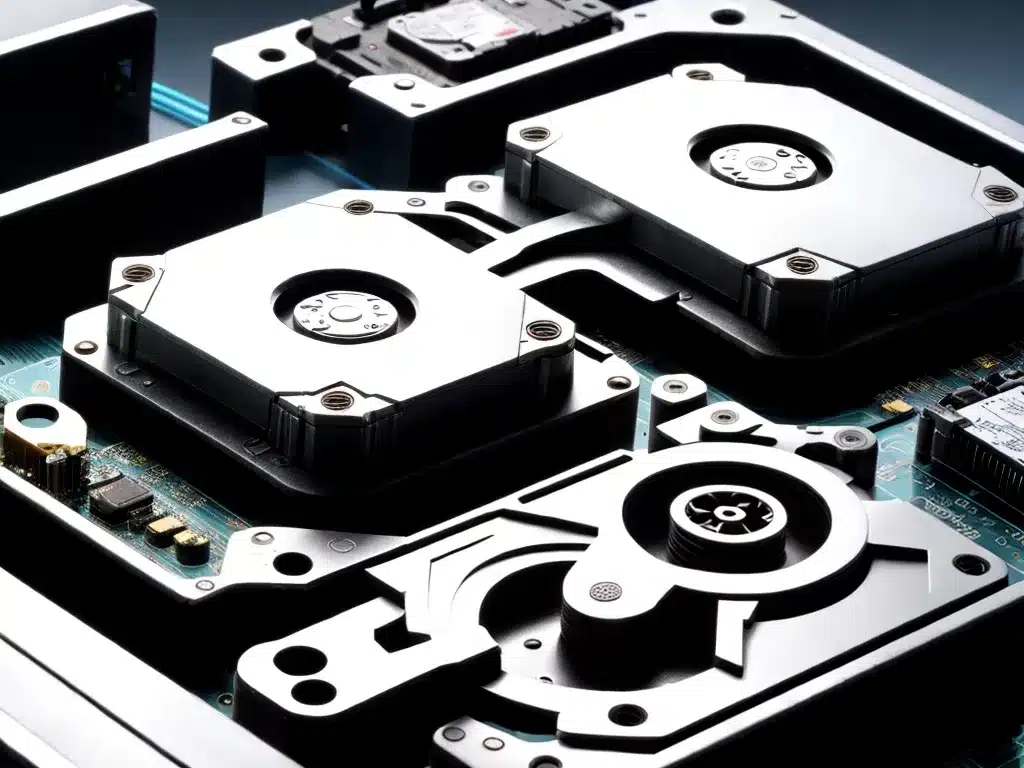
Introduction
A CPU (Central Processing Unit) is the brains of a computer. It handles all the computations and logical operations that allow a computer to function. Like any electronic component, CPUs can sometimes malfunction and cause problems. As an IT technician, diagnosing faulty CPU issues is an important troubleshooting skill. In this article, I will provide an in-depth guide on how to diagnose common CPU problems.
Understanding CPU Architecture
To diagnose CPU issues, you first need to understand the basic architecture and components of a CPU. Here are some key things to know:
-
Cores – Modern CPUs have multiple cores to handle parallel processing. Issues with one core can cause crashes and slowdowns.
-
Cache – CPUs have small amounts of fast memory called cache to store frequently used data. Cache errors can cause data corruption and crashes.
-
Registers – Registers are small storage units inside the CPU to hold instruction data. Errors in registers can lead to incorrect program execution.
-
ALU – The arithmetic logic unit performs calculations and logical comparisons. Faulty ALU can cause calculation errors.
-
Clock – The clock generates the CPU timing pulses. An unstable clock speed causes crashes, freezes and overheating.
-
Firmware – This is the onboard software that initializes the CPU. Corrupted firmware can prevent booting.
Diagnosing CPU Problems
With an understanding of CPU components, I can now go over methods for diagnosing common CPU issues:
1. Check for Overheating Issues
-
Overheating is one of the most common CPU faults. Use monitoring software to check CPU temperatures.
-
Look for clogged fans, failed fans, or poor contact between the CPU and heatsink.
-
Thermal throttling due to overheating can significantly reduce CPU speed.
2. Test with Stress Applications
-
Run intensive CPU stress testing applications like Prime95.
-
This can reveal defects in the ALU or cache by pushing the CPU to its limits.
-
Crashes or calculation errors point to hardware faults.
3. Review System Logs
-
System logs contain valuable error messages that can indicate CPU faults.
-
Watch for hardware errors, kernel panics, program crashes, and exception errors.
-
Google the specific error codes to understand the potential issue.
4. Update Firmware and Drivers
-
Outdated CPU firmware and drivers can cause instability and crashes.
-
Update the BIOS/UEFI firmware to the latest version from your motherboard vendor.
-
Update chipset, CPU and OS drivers to rule out software incompatibilities.
5. Test Individual CPU Cores
-
Use OS tools like Coreinfo to disable faulty cores individually.
-
Faulty cores usually cause bluescreens or freezing during stress testing.
-
This helps isolate the failure to a single core if multiple cores are present.
6. Replace Defective Hardware
-
If all troubleshooting points to a CPU hardware flaw, replacement of the processor is needed.
-
Match the replacement CPU architecture and socket type to your motherboard.
-
Reapplying high-quality thermal paste can also help resolve overheating issues.
Identifying Failure Modes
Here are some typical CPU failure modes and their symptoms:
-
Overclocking – Pushing clock speeds too high can cause overheating, crashes and permanent damage. Always overclock gradually and stress test for stability.
-
Electromigration – Electric currents can cause metal migration in transistors over time leading to shorts and failures. Results in crashes and calculation errors.
-
Worn Contacts – Repeated insertion into sockets can wear down CPU pins and contacts. Causes connectivity issues and power delivery faults.
-
ESD Damage – Static discharge can fry delicate CPU components. Look for telltale burn marks. The system will not boot.
-
Manufacturing Defects – Imperfections in silicon manufacturing can produce intermittent errors. Usually detected during factory testing.
Preventing CPU Issues
Here are some tips to avoid CPU faults through preventive maintenance:
-
Use a quality CPU cooler and thermal paste. Keep fans and heatsinks clean.
-
Avoid overclocking beyond manufacturer ratings. Stress test overclocks for stability.
-
Install surge protectors to avoid electrical damage. Use anti-static precautions when handling CPUs.
-
Keep firmware and drivers updated. Update BIOS if system becomes unstable.
-
Do not run intensive workloads for extended periods. Give CPU a break to cool down.
-
Replace CPUs after 4-5 years to reduce electromigration and worn contact risks.
Conclusion
Diagnosing tricky CPU issues requires in-depth technical knowledge. Follow a methodical troubleshooting approach focused on temperature monitoring, software tests, log analysis and hardware replacement. Understanding CPU architecture helps isolate faults to specific components. With some diligent testing, you can identify and resolve common CPU failures. Advanced techniques like overclocking also require care to avoid introducing instability. With proper preventive maintenance, CPUs can deliver many years of reliable service.












